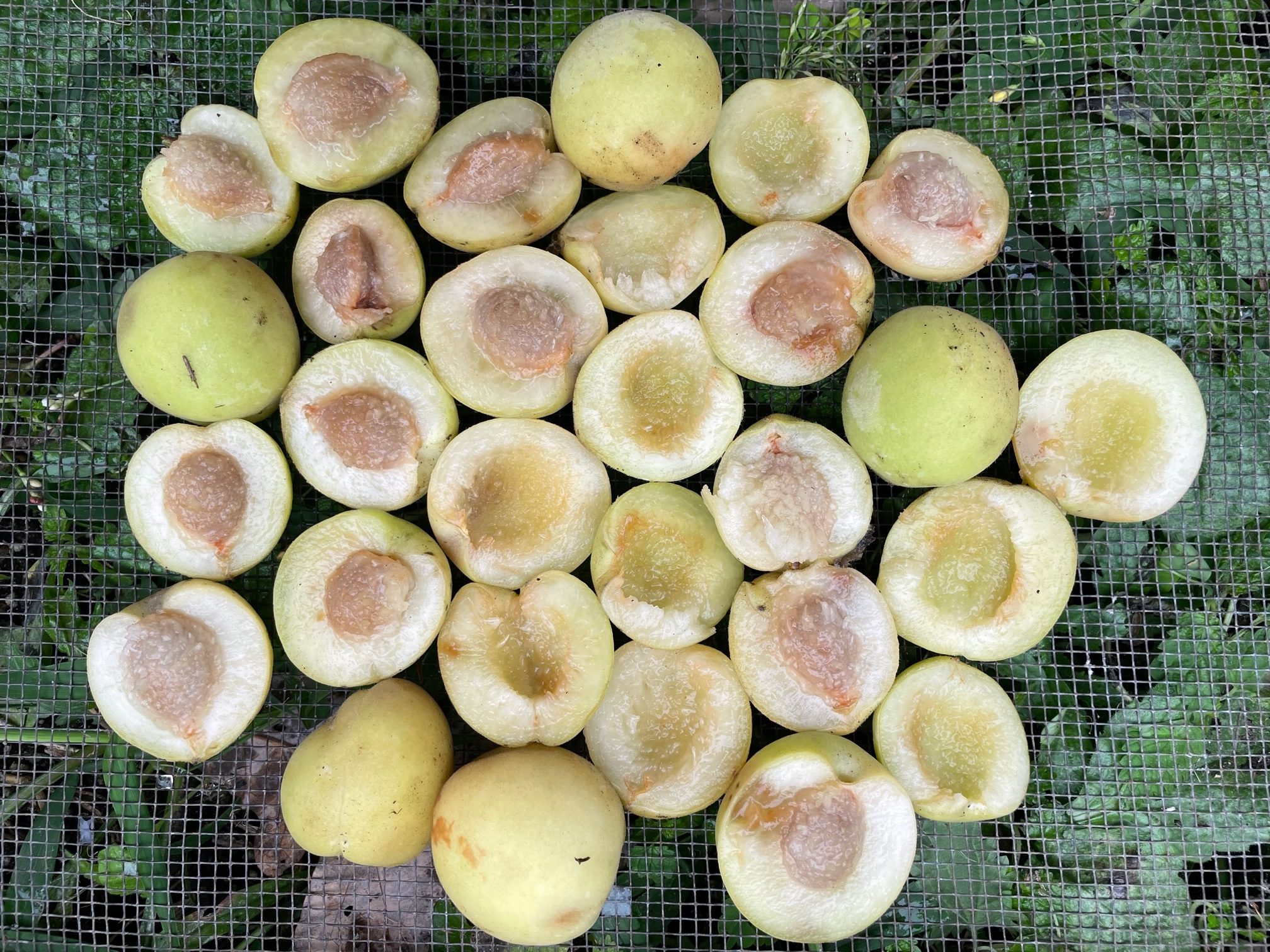Experience-Seeds-Knowledge-Plant Discoveries-Ecological Enrichment-Join Now Click Here!


New Seeds-The Pits, the Acorns, the Nuts
It is the beginning of something good and beneficial for all of ecology and the integration of all plants and animals.

Every year brings in a different selection of fruits, nuts and other edible plant seeds from around the world all harvested at my farm in southwest Michigan. Even the Wild Texas white peach above produced fruit in great abundance this year despite its frost pocket location. I have increased the quantity of seeds with many of the selections this year but held the cost or slightly lowered it from last year. On especially rare seeds, I have lowered the minimum quantity to make sure these seeds are shared to a wider audience. These seeds represent my time tested method of using only the most adaptable plants perfect for both clonal propagation and seed source identified strains. It has been my life time ambition to share these on a larger scale to improve our ability as farmers to raise food whether it is for our family or the world’s family.


As of last week of the September here are a few: Links included.
All orders receive a gift packet of select seeds.
Chestnutleaf Oak Ecos, Acorntopia Sargent Oak, Nutty Oak
Timburr Chestnut, Purple Ease Potato, Nana Beach Plum
Ecos Beach Plum, Wild Texas Peach
On peaches from seeds:
I remember seeing a peach tree in my neighbors garden that grew from a cast away pit. He used the Stout method of mulch and was an early advocate of organic gardening. Often peach seeds are not touched by squirrels or mice as the shells are too thick. In some locations the pits can remain viable for years until the right conditions exist. In the dry southwestern U.S. there are wild peaches which were once cultivated by the Navaho. Today they are currently being revived into both cultivar level plants as well as seedling plants for pit production as a rootstock. The Texas peach might as well be called the Austria or German peach as there wild populations exist that were at one time thought to have been distributed by the Romans. Anything for a good peach. These small peaches represent an opportunity to develop peaches that are immune to disease and insects yet retain or improve flavor of this beloved fruit. Ironically today’s modern peaches look almost the opposite of its ancient cousin. If someone were to see these alongside todays peach, people would likely wonder what happened to the peach thinking it was a mistake. That is until they tasted them. One researcher in India found that the wild peaches there had over ten times the iron of their modern counterparts in the nearby Elberta orchards. This seems to be a common theme of wild versus cultivated cultivars.
Pits of the Siberian C peach as well as Nemaguard are used as rootstocks today but most are now clonal rootstocks too as pit production and availability is hampered by trade laws as well as availability. Plum rootstock is very common now. Once I purchased some grafted plum cultivars. They died after two years. What came up from the root? A peach.
